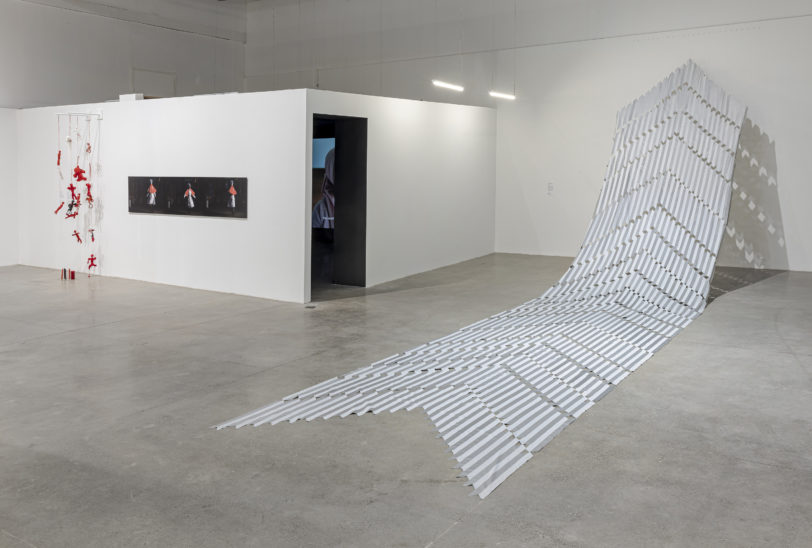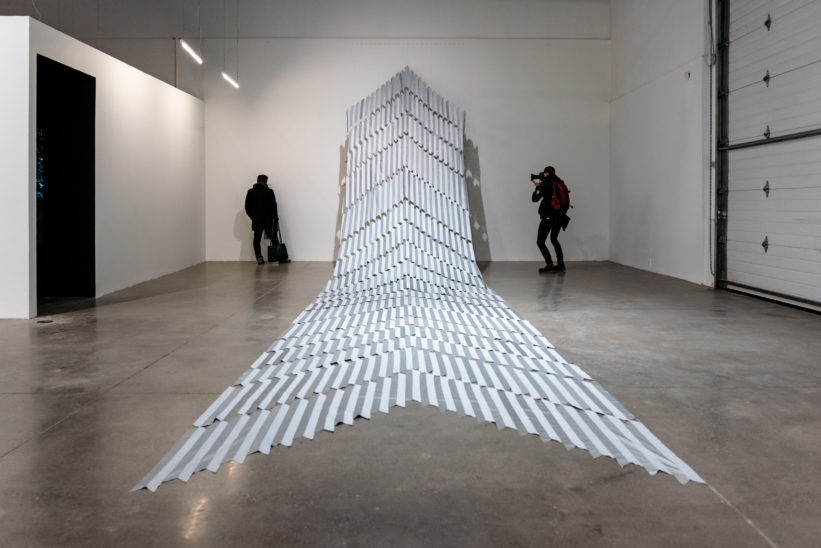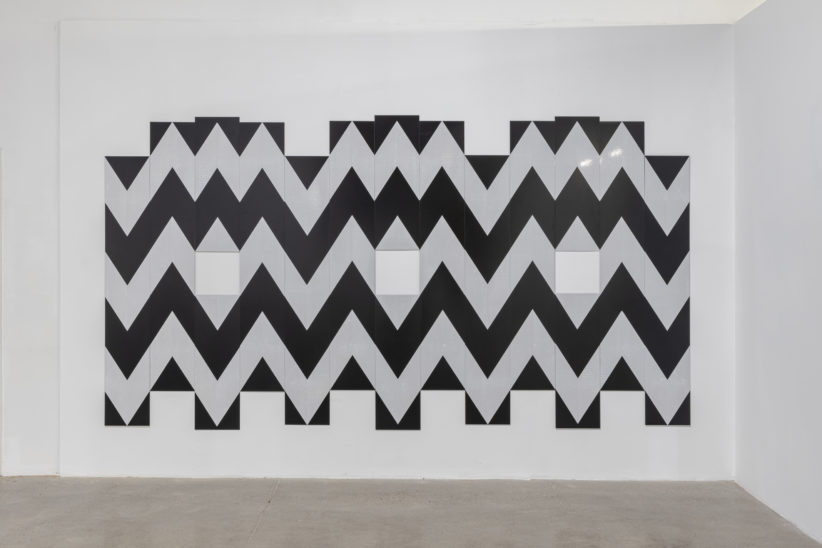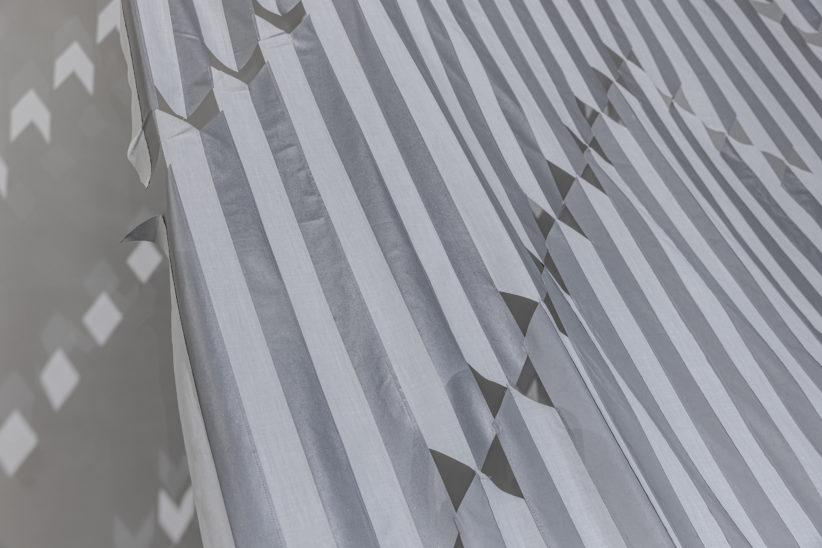The Mata Aho Collective is comprised of Erena Baker (Te Atiawa ki Whakarongotai, Ngāti Toa Rangātira), Sarah Hudson (Ngāti Awa, Ngāi Tūhoe), Bridget Reweti (Ngāti Ranginui, Ngāi Te Rangi) and Terri Te Tau (Rangitāne ki Wairarapa), four Maori women artists who have worked together since 2012.
One of their first collective works, Kaokao #1, is created from some 200 metres of reflective tape, sewn together into a tukutuku lattice pattern. As the artists relay, their work often makes use of the “conceptual foundations of weaving without actually weaving.” The woven dimension of each piece is frequently generated through needle and thread, and with this, it is the act of coming together, the many hours piecing together a work by hand, that is important to the artists. More than simply emphasizing process overproduction, it is in this coming together that the artists call attention to whanau, or extended family, as well as the role of collective work. Working this way also enables them to produce sculptures on a scale not possible in their individual practices. Mata Aho makes weaving monumental, establishing the presence of women’s labour and aesthetics. Their work honours domestic practices through this sense of scale. Taking up as much space as possible is then a physical embodiment of power.
Materials are also carefully considered in their practice. In place of using natural fibres, they state that their emphasis is on “materials that are usually cheap, accessible and ubiquitous amongst our communities.” For them, this enables a sense of familiarity: “If our families come into the gallery and recognise nothing else—they can see our work and know the material.” Kaokao #1 is evidence of this. The high visibility tape that comprises its weave is used for safety. As the artists note, it is the visual language of labourers (in Aotearoa / New Zealand, the predominant labour force are Maori and other minorities). The collective’s use of the reflective tape honours a legacy that is often underrecognized.
The pattern of Kaokao #1 is also significant. The chevron weave is produced by one person passing or threading the material through a panel to a person sitting on the other side. The tukutuku design, known as Kaokao, is both a military symbol attributed to a warrior’s strength and found on birthing mats, implying the strength of women in bringing about life. For the artists, this design is a means “to represent the unlimited strength and warrior-like endurance of women to create and bring new life.” Collectively, Kaokao #1 and #2 are a means to communicate traditional knowledge, particularly the learning relayed in the Maori whakataukī (or proverb), He wāhine, he whenua, ka ngaro te tangata: Without women and without land, humanity is lost.
Made possible with the generous support of the Women Leading Initiative.
Detailed Audio Description:
Audio Didactic:
Bio
The Mata Aho Collective (established in 2012) is a collaboration between four Māori women, Erena Baker of Te Atiawa ki Whakarongotai, Ngāti Toa Rangātira; Sarah Hudson of Ngāti Awa, Ngāi Tūhoe; Bridget Reweti of Ngāti Ranginui, Ngāi Te Rangi; and Terri Te Tau of Rangitāne and Ngāti Kahungunu ki Wairarapa. Mata Aho produces large scale, often textile-based installations linked to mana wāhine Māori: the power and integrity of Māori women.
Participated in the “Rabbit Hole: Pod Theory” Residency, 2020.
Exhibition Site
Arsenal Contemporary Art Toronto
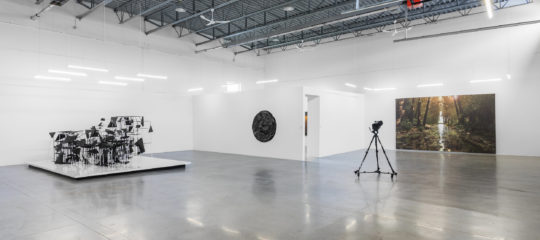
45 Ernest Ave
Toronto ON
M6P 3M7

